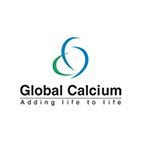Empowering progress with Chemical Innovation
Chemical Expertise. Global Impact
Chemical Integration, Operational Innovation
Thirumalai Chemicals Ltd. is a renowned name in the chemical manufacturing industry, we are known for our commitment to quality, innovation, and sustainability. With a rich legacy and a global presence, we have been serving a diverse range of industries for several decades.
of Phthalic Anhydride
Products
Manufacturing facilities
to over 60+ countries
Years Legacy
Customers
Our remarkable success is firmly anchored and nurtured by the robust company culture we have cultivated over the years. These have dictated our relationships with valued customers, employees, partners and the communities we serve and support.







TCL has set the standards for environmental and safety practices before they were mandated. We continue to innovate in order to meet our goal of being a low-impact company.
Read More
At TCL, we invest in people. Our relationship with customers, employees, partners, and our community is the foundation of our success.
Read More
Our key products are found in every household across 34 countries. Constant improvement in new technologies and products is in our DNA.
Read More






























Lorem ipsum dolor sit amet, consectetur adipiscing elit. Ut elit tellus, luctus nec ullamcorper mattis, pulvinar dapibus leo.

Lorem ipsum dolor sit amet, consectetur adipiscing elit. Ut elit tellus, luctus nec ullamcorper mattis, pulvinar dapibus leo.